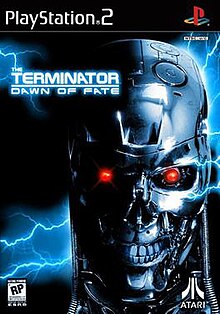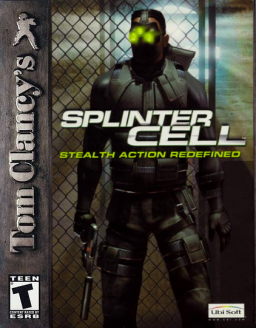
Tom Clancy's Splinter Cell is a 2002 stealth game developed by Ubi Soft Montreal and published by Ubi Soft. It is the first game in the Splinter Cell series. Endorsed by author Tom Clancy, it follows the activities of NSA black ops agent Sam Fisher. The game was inspired by both the Metal Gear series and games created by Looking Glass Studios, and was built using Unreal Engine 2.

Jurassic Park: Operation Genesis is a construction and management simulation video game based on the Jurassic Park series developed by Blue Tongue Entertainment and published by Universal Interactive, with the console versions being co-published with Konami. It was released for Windows, Xbox, and PlayStation 2. The game's primary goal is to construct a five-star rated dinosaur theme park named Jurassic Park on custom-generated islands by hatching dinosaurs, building attractions, keeping visitors entertained, and ensuring the park's safety.

Harry Potter and the Chamber of Secrets is an action-adventure game. It is based on the 2002 film of the same name.

Burnout 2: Point of Impact is a 2002 racing video game developed by Criterion Games and published by Acclaim Entertainment for PlayStation 2, GameCube and Xbox. It is the sequel to the 2001 video game Burnout and the second title in the Burnout series. It was the last Burnout game to be released on the GameCube and the series would not see a release on a Nintendo platform until the release of Burnout Legends in 2005. The game also marked Acclaim's last entry in the Burnout series, as Acclaim would go bankrupt in 2004; the rest of the series would be published by Electronic Arts.

Madden NFL 2003 is an American football simulation video game based on the NFL that was developed by EA Tiburon and Budcat Creations and published by EA Sports. The 14th installment of the Madden NFL series, the game features former St. Louis Rams running back Marshall Faulk on the cover. This edition of Madden was the first to have EA Trax, the Mini Camp mode, and to feature Al Michaels as play-by-play announcer, who took over for Pat Summerall. Although it featured the expansion Houston Texans and the relocation of the Seattle Seahawks to the NFC, it was actually the second to do so. The game was released on August 12, 2002 for the Game Boy Advance, GameCube, Microsoft Windows, PlayStation, PlayStation 2 and Xbox. The PlayStation version also includes the Sega Genesis version of John Madden Football 93.
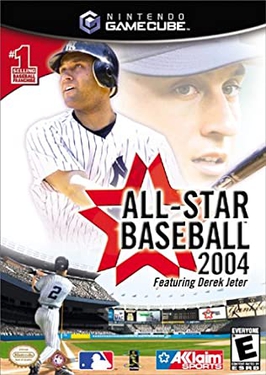
All Star Baseball 2004 is a baseball video game developed by Acclaim Studios Austin and Acclaim Studios Manchester and published by Acclaim Entertainment in 2003. It features Derek Jeter on the cover.
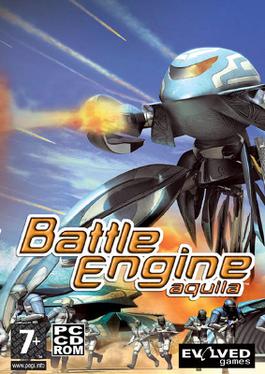
Battle Engine Aquila is a 2003 video game for PlayStation 2 and Xbox developed by Lost Toys and published by Infogrames Europe. In the game the player pilots the Battle Engine for the Forseti military in their wars against the Muspell to decide who will rule what's left of the world. Battle Engine Aquila received little attention from the public despite overall good reviews from critics. It was listed as #86 in the Top 100 Games for PlayStation 2 by IGN. A later Microsoft Windows port was published by Encore Software.
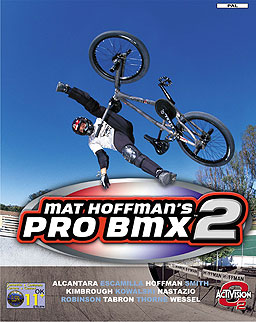
Mat Hoffman's Pro BMX 2 is a BMX video game endorsed by Mat Hoffman and published by Activision under the Activision O2 label. The game, which serves as a sequel to Mat Hoffman's Pro BMX, was released on August 13, 2002 for the PlayStation 2 and Xbox. A Game Boy Advance port was developed by HotGen and released the same day as the PlayStation 2 and Xbox versions. A GameCube port was developed by Gratuitous Games and was released on October 8, 2002.
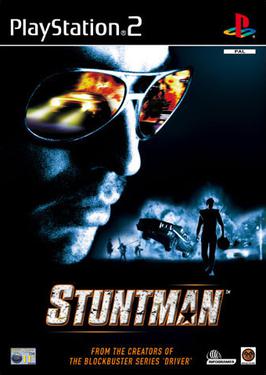
Stuntman is the name of two action-adventure racing video games; one was developed by Reflections Interactive for the PlayStation 2, and the other by Velez & Dubail for the Game Boy Advance, with both being published by Infogrames under the Atari brand name. The games focus around the career of a motion-picture stuntman. It takes the player through various movies in which they perform dangerous stunts as called by the game.
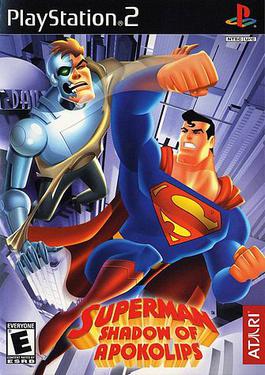
Superman: Shadow of Apokolips is a video game that was released in 2002 for the PlayStation 2 and GameCube consoles. It was developed by Infogrames Sheffield House, published by Infogrames under the Atari brand name, and released in conjunction with Warner Bros. Interactive Entertainment and DC Comics. It is based on the television series Superman: The Animated Series.

SpyHunter is a vehicular combat game. It is a remake and sequel of the 1983 arcade game of the same name first released for PlayStation 2 in 2001. It has since been ported to GameCube, Xbox, Game Boy Advance, Microsoft Windows, OS X, and Tapwave Zodiac. In the game, the player drives the G-6155 Interceptor, an advanced, weaponized spy vehicle. Unlike the original's top-down view, the remake is played with a chase camera, similar to a racing game.
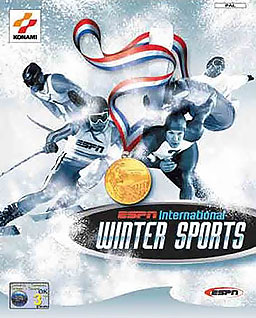
ESPN International Winter Sports 2002, known in Japan as Hyper Sports 2002 Winter, is the name of two sports video games released in 2002 by Konami, one for the PlayStation 2, Xbox, and GameCube, and the other for the Game Boy Advance. In Japan the game is part of the Hyper Sports series, known internationally as the Track & Field series.

MLB Slugfest 2003 is a baseball video game published by Midway Home Entertainment in 2002. It is the first game in the MLB Slugfest series. Alex Rodriguez from the Texas Rangers is the cover athlete.
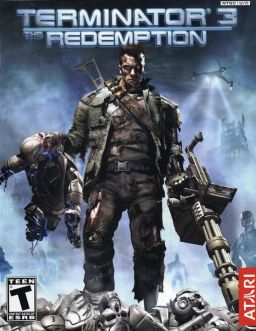
Terminator 3: The Redemption is an action-adventure video game based on the 2003 film Terminator 3: Rise of the Machines. It was developed by Paradigm Entertainment and published by Atari in 2004 for the PlayStation 2, Xbox, and GameCube. Terminator 3: The Redemption received "mixed or average" reviews according to Metacritic. It was praised for its graphics and was considered an improvement over an earlier game ; however, the gameplay was criticized as linear, repetitive and difficult.

Transworld Surf is a sports video game developed by Angel Studios and published by Infogrames The game was released for GameCube, PlayStation 2, and Xbox between November 2001 and March 2003. The Xbox version of the game was the third game released under Infogrames' newly-revamped Atari label.

Test Drive: Off-Road: Wide Open is a racing video game developed by Angel Studios and published by Infogrames for PlayStation 2 and Xbox. It is the first game in the Test Drive series to be developed for the sixth generation of gaming systems, and the fourth and final installment of the Off-Road series. Trucks from General Motors make a full return as playable vehicles after being sort of absent in Test Drive: Off-Road 3.

Terminator 3: Rise of the Machines is a first-person shooter video game based on the film of the same title, with elements of hand-to-hand combat in the third-person perspective. It was developed by Black Ops Entertainment, with assistance work done by other Atari-owned subsidiaries. The game was published by Atari for PlayStation 2 and Xbox in 2003. An isometric shooter version was released for the Game Boy Advance during the same year. A puzzle game was also released for mobile phones. The game was also going to be released for GameCube, but was eventually cancelled.

NASCAR Heat 2002, sometimes mislabeled as NASCAR Heat, is a NASCAR video game produced by Infogrames for the Xbox, PlayStation 2, and Game Boy Advance consoles. It is the successor to the NASCAR Heat game, and the predecessor to NASCAR: Dirt to Daytona. NASCAR Heat 2002 can have 24 racers (PS2) and 43 released on June 18, 2001 on the PS2, and has 19 official NASCAR tracks. The Xbox version was released on November 15, 2001 and the Game Boy Advance version was released on May 6, 2002.

TD Overdrive: The Brotherhood of Speed is a racing video game developed by Pitbull Syndicate and published by Infogrames for PlayStation 2, Xbox and Microsoft Windows.

Triple Play 2002 is a baseball sports game released for PlayStation 2 and Xbox in 2002. On the cover is Arizona Diamondbacks player Luis Gonzalez. It is the only game in the Triple Play series to be released on Xbox, and the last game in the series to date.
